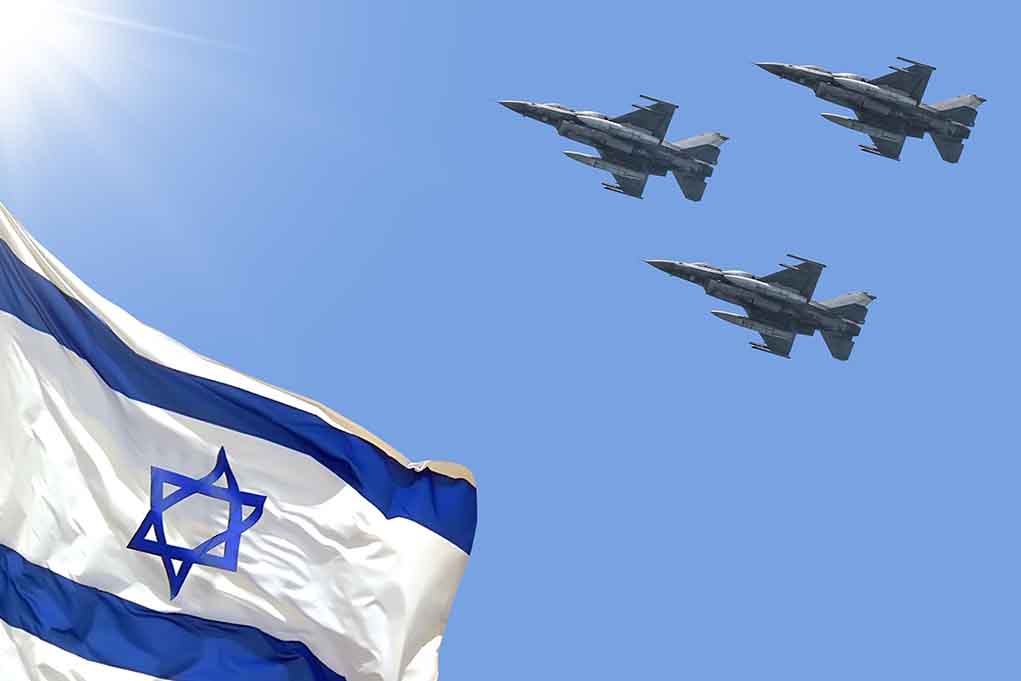
Israel’s preemptive strike obliterates Iran’s iconic ‘Top Gun’ F-14 Tomcats, escalating a regional conflict that has already claimed hundreds of lives as Tehran’s military capabilities rapidly deteriorate under relentless IDF assault.
Key Takeaways
- Israel destroyed two Iranian F-14 Tomcat fighter jets in a precision strike, further demonstrating its air superiority over Tehran
- Iran’s military capabilities are severely diminished with dwindling missile stockpiles and key leadership either dead or in hiding
- The IDF has struck over 170 targets and 720 military facilities in less than three days, maintaining complete air dominance over Iran
- President Trump vetoed an Israeli plan to assassinate Iran’s Supreme Leader Khamenei, who has reportedly retreated to a fortified bunker
- Public unrest in Iran is growing amid intensified domestic crackdowns, with civilians being arrested for sharing pro-Israel content
Israel’s Surgical Strike Against Iranian Air Power
In a stunning display of military precision, Israeli forces conducted a surgical strike against two Iranian F-14 Tomcat fighter jets stationed at an airbase near Isfahan. Drone footage released by the Israel Defense Forces (IDF) captured the moment these iconic American-made aircraft, famously featured in the movie “Top Gun,” erupted into flames following direct hits. The IDF stated the jets “were intended to intercept Israeli aircraft,” justifying the preemptive strike as necessary to maintain air superiority during ongoing operations against Iranian military assets.
The destruction of these F-14s represents more than just a tactical victory for Israel. These aircraft, part of Iran’s dwindling fleet of American military hardware acquired before the 1979 Islamic Revolution, symbolize Tehran’s increasingly precarious military position. Originally purchasing 79 F-14s from the United States in the 1970s, Iran has struggled for decades to maintain these sophisticated aircraft without access to American parts or technical support. The loss of these jets further diminishes Iran’s already limited air defense capabilities as Israel continues its widespread campaign against Iranian military infrastructure.
Widespread Campaign Against Iranian Military Assets
Israel’s operation against Iran has expanded dramatically in recent days, with the IDF targeting critical infrastructure and propaganda hubs across the country. Military officials report striking over 170 targets and more than 720 military facilities in less than three days, demonstrating complete air dominance over Tehran. The campaign has specifically focused on Iran’s missile forces and Islamic Revolutionary Guard Corps (IRGC) bases, severely degrading the regime’s offensive capabilities. Major strikes have hit IRGC air bases, missile convoys, and regime buildings in Tehran itself.
“These jets were intended to intercept Israeli aircraft,” the IDF stated regarding the destroyed F-14s, highlighting the preemptive nature of Israel’s operations against potential threats to its air campaign.
The conflict has also witnessed sophisticated intelligence operations, with Iranian authorities discovering a workshop allegedly used by Israeli operatives to assemble drones for attacks inside Iran. Additionally, the IDF has conducted targeted assassinations of IRGC intelligence officials, including Mohammad Kazemi, dealing a significant blow to Iran’s intelligence apparatus. A massive fire at the Shahran oil depot and bombing of Iran’s state broadcaster are among the most visible results of Israel’s campaign to degrade both military capabilities and propaganda mechanisms.
President Trump’s Diplomatic Influence
While supporting Israel’s right to defend itself, President Trump has reportedly played a moderating role in the conflict. According to media reports, Trump vetoed an Israeli plan to assassinate Iran’s Supreme Leader Ayatollah Ali Khamenei, though Israeli officials strongly disputed this claim. Prime Minister Netanyahu called the report “false,” while Israeli National Security Advisor Tzachi Hanegbi described it as “fake news of the highest order.” Nevertheless, Khamenei has reportedly moved to a fortified bunker as the conflict intensifies, reflecting the serious threat posed by Israeli operations.
“I would be open to it… This is something I believe is going to get resolved,” President Trump stated regarding his willingness to help mediate the conflict, demonstrating his commitment to eventually achieving regional stability.
The United States has increased its military presence in the region, with the USS Nimitz carrier strike group heading to the Middle East alongside a substantial aerial deployment. This show of force underscores American support for Israel while serving as a deterrent against potential escalation by other regional actors. Meanwhile, Russia’s President Putin offered to mediate the crisis, but his proposal was rejected by the European Union, highlighting the complex international dynamics surrounding the conflict.
Growing Internal Pressure on Iranian Regime
As military losses mount, the Iranian regime faces increasing pressure from within. The government has intensified domestic crackdowns, slowing internet speeds, expanding security presence, and arresting civilians suspected of sympathizing with Israel. Regime-controlled media outlets are targeting individuals sharing pro-Israel content, with numerous arrests reported across the country. Despite these measures, public unrest continues to grow, with chants against Khamenei and the regime being reported in several cities.
The conflict has resulted in significant casualties, with at least 224 deaths in Iran and 24 in Israel as it enters its fourth day. Iran continues to launch missiles at Israel in retaliation, but intelligence reports suggest its capability is rapidly depleting. With top regime officials either dead or in hiding and military assets being systematically destroyed, Iran’s position grows increasingly desperate. The destruction of the iconic F-14 Tomcats, perhaps the most visible symbol of Iran’s once-formidable air force, stands as a stark reminder of the regime’s diminishing capacity to defend itself against Israel’s precision strikes.












